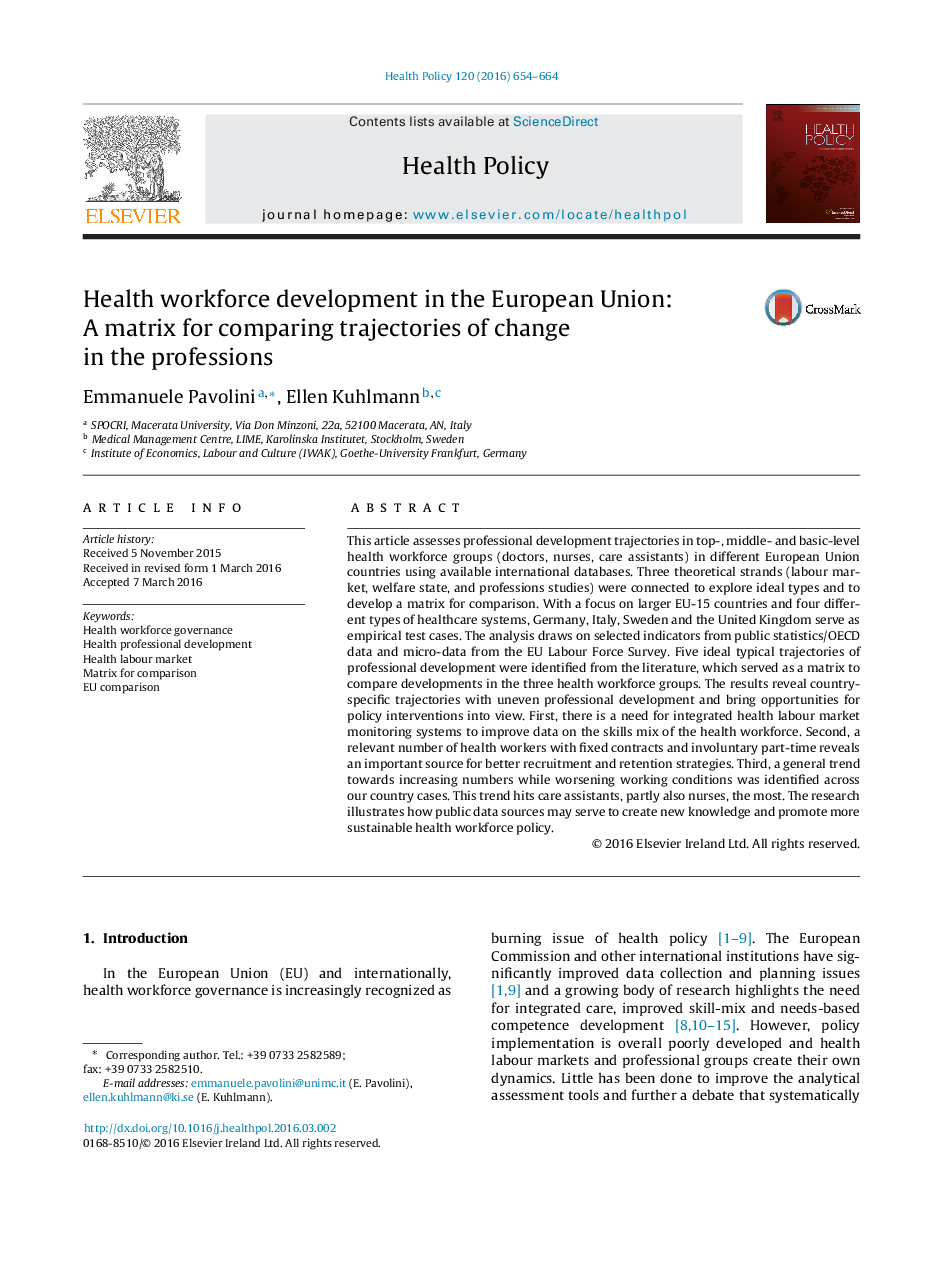| Article ID | Journal | Published Year | Pages | File Type |
|---|---|---|---|---|
| 6238942 | Health Policy | 2016 | 11 Pages |
â¢Trajectories of health workforce change in the EU-15 reveal path-dependency and variety.â¢Integrated monitoring systems are needed to improve skill-mix and integrated care.â¢A general trend towards increasing numbers but worsening working conditions was identified.â¢This trend impacts differently and hits care assistants, partly also nurses, the most.â¢Research illustrates how to use public data to improve health workforce policy.
This article assesses professional development trajectories in top-, middle- and basic-level health workforce groups (doctors, nurses, care assistants) in different European Union countries using available international databases. Three theoretical strands (labour market, welfare state, and professions studies) were connected to explore ideal types and to develop a matrix for comparison. With a focus on larger EU-15 countries and four different types of healthcare systems, Germany, Italy, Sweden and the United Kingdom serve as empirical test cases. The analysis draws on selected indicators from public statistics/OECD data and micro-data from the EU Labour Force Survey. Five ideal typical trajectories of professional development were identified from the literature, which served as a matrix to compare developments in the three health workforce groups. The results reveal country-specific trajectories with uneven professional development and bring opportunities for policy interventions into view. First, there is a need for integrated health labour market monitoring systems to improve data on the skills mix of the health workforce. Second, a relevant number of health workers with fixed contracts and involuntary part-time reveals an important source for better recruitment and retention strategies. Third, a general trend towards increasing numbers while worsening working conditions was identified across our country cases. This trend hits care assistants, partly also nurses, the most. The research illustrates how public data sources may serve to create new knowledge and promote more sustainable health workforce policy.
